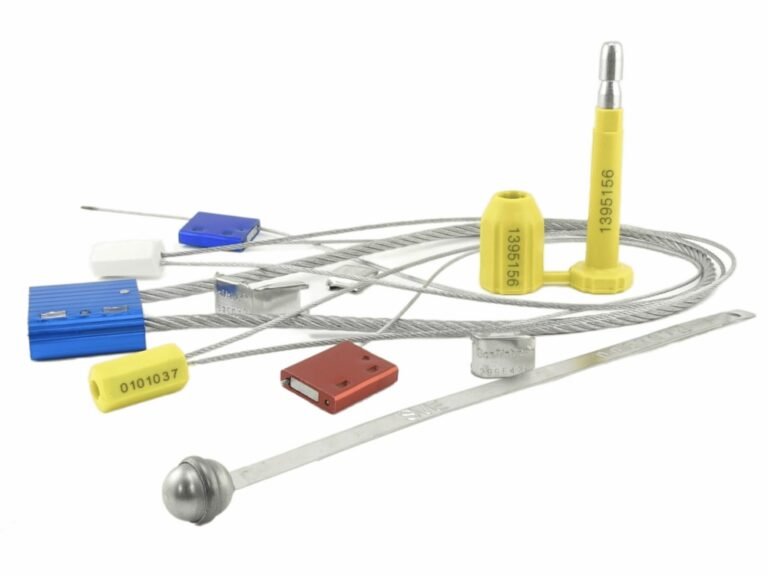An evidence truck arrives, the seal is present, but was the evidence inside compromised en route? This is the critical question that can dismantle a case, and the answer often lies in the choice of a simple security seal.
For evidence in transportation, the security seal is a silent, constant witness. Selecting the right one is not a logistical detail; it is a critical security decision that ensures the seal can testify to the evidence's integrity throughout its entire vulnerable journey.
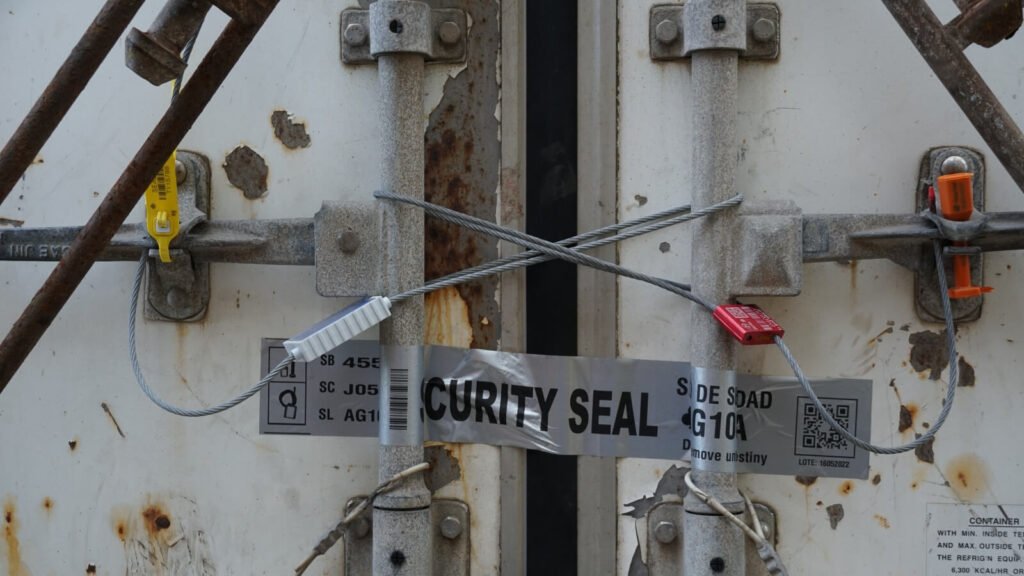
When I consult with law enforcement on securing their Chain of Custody, I emphasize that evidence is never more vulnerable than when it is in transit. It is outside a secure facility, subject to variable conditions, and potentially exposed to more sophisticated attacks. The security seal you choose must be robust enough to protect the evidence not just from tampering, but from the environmental and physical stresses of the journey itself. The seal isn't just closing a container; it's securing a mobile crime scene.
The Journey's Risk: Why Seal Selection is Critical for Evidence in Transit?
Do you assume a seal that works in a storage room will also work on a moving vehicle? This assumption overlooks the dynamic risks of transportation, creating a critical weak point in your evidence management.
During transport, a seal must resist vibration, environmental changes, and prolonged periods without direct supervision. Selecting a seal specifically designed to withstand these factors is paramount to ensuring the evidence arrives in a legally defensible state.
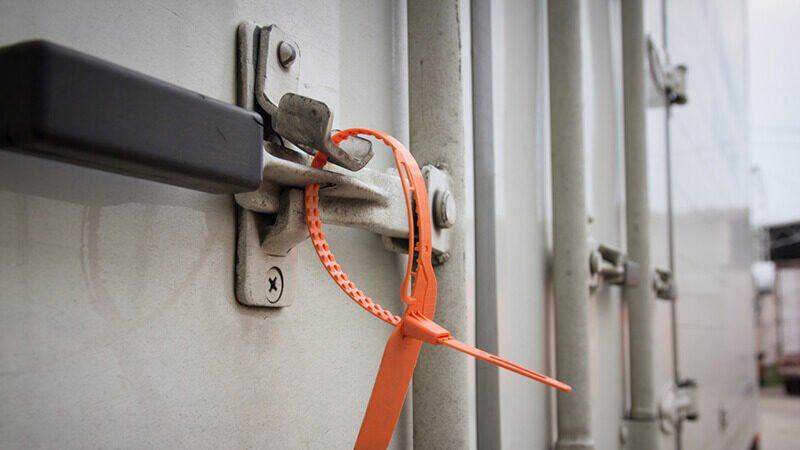
An evidence locker is a controlled environment. A truck or van is not. I reviewed a case where a simple plastic seal, perfectly adequate for an evidence bag on a shelf, became brittle and failed due to temperature fluctuations and constant vibration during a multi-day transport. A defense attorney could argue that the seal "broke on its own," introducing reasonable doubt. The selection process must therefore move beyond just tamper-evidence and account for durability and resilience during the journey. The seal must not only show if someone attacked it but also be tough enough to prove it wasn't defeated by the road.
Seals on the Move: Plastic vs. Cable Seals for Transport Scenarios?
Are you using light-duty plastic seals to secure the vehicle itself? This common misapplication is like putting a screen door on a bank vault; it provides the illusion of security but no real physical barrier.
Plastic pull-tight seals are designed to secure evidence within a locked vehicle or container. High-security cable seals are designed to secure the primary access points of the vehicle or container itself. They are not interchangeable.
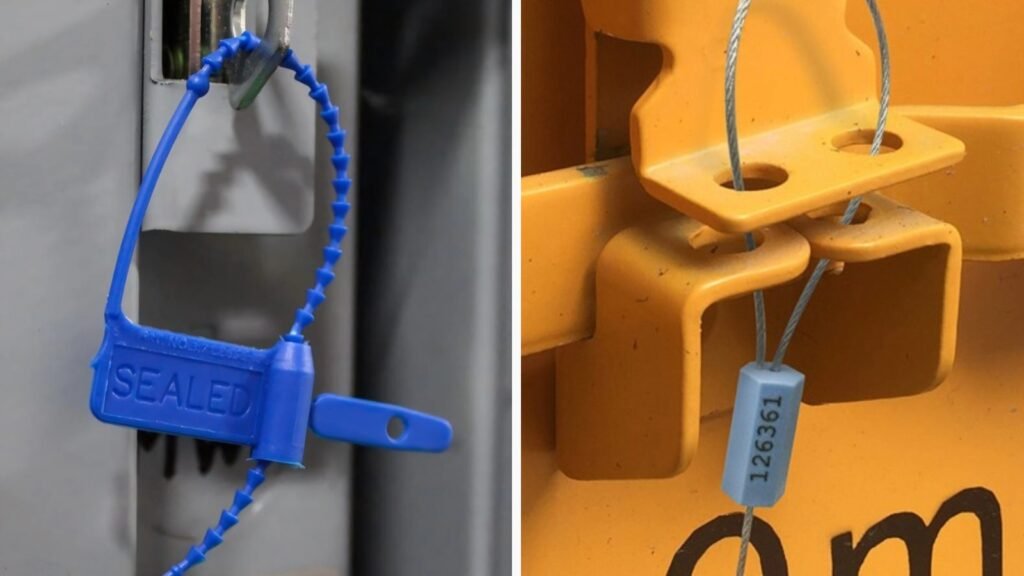
The fundamental principle of sealing evidence for transport is layering. You secure the evidence, and you secure the vessel carrying it. Using the wrong seal for either layer invalidates the strategy.
| Feature | Plastic Pull-Tight Seals | High-Security Cable Seals |
|---|---|---|
| Transport Role | Internal Seal: Secures individual bags, boxes, or cases inside the vehicle. | External Seal: Secures vehicle doors, transport crates, and container hasps. |
| Primary Function | Visual Tamper-Evidence | Robust Physical Barrier |
| Resists | Low-force, opportunistic tampering. | High-force, intentional attacks with tools. |
| Vulnerability | Can be brittle in cold, susceptible to high vibration over time. | Highly resistant to weather and vibration. |
| Ideal Scenario | Securing a DNA kit box that is then placed in a locked van. | Securing the main door of the locked van carrying the DNA kit box. |
Matching Seal to Mission: A Framework for Transport Risk Assessment?
Does your protocol differentiate between a 10-mile cross-town transfer and a 500-mile interstate transport? If not, you are applying a low-risk solution to potentially high-risk scenarios.
A transport-specific risk assessment should dictate seal selection. The key variables are the duration of the journey, the security of the vehicle, and the value of the evidence.
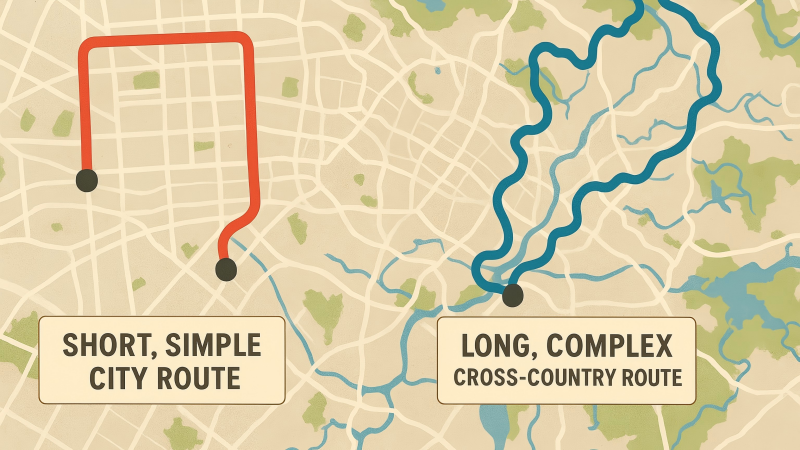
The seal must be appropriate for the mission. I recommend a tiered approach to transport sealing protocols.
Tier 1: Local, Secured Transport
- Scenario: Short-duration (under 2 hours), in-town transfer in a continuously monitored, secure vehicle.
- Internal Seal: Standard numbered plastic pull-tight seals on all evidence items.
- External Seal: A heavy-duty fixed-length plastic seal or light-duty cable seal may be sufficient.
Tier 2: Inter-Agency, Extended Transport
- Scenario: Medium-duration (2-8 hours), transfer to another jurisdiction or state lab. Vehicle may be unattended for short periods.
- Internal Seal: High-quality, durable plastic pull-tight seals with metal locking jaws.
- External Seal: Mandatory high-security, ISO 17712 certified cable seal.
Tier 3: High-Value, Long-Haul Transport
- Scenario: Multi-day transport of high-profile or high-value evidence (e.g., large seizures of narcotics or firearms). High threat of coordinated attack.
- Internal Seal: All items sealed with durable plastic seals.
- External Seal: An ISO 17712 certified bolt seal or 3.5mm+ cable seal. Some protocols may even require two separate seals on different hasps.
Road-Worthy Evidence: Key Seal Features for Surviving Transit?
Beyond strength, what specific features make a seal suitable for the rigors of transportation? A seal that looks good in a catalog might fail under real-world road conditions.
For transport, prioritize seals with laser-engraved markings, materials resistant to UV light and temperature changes, and locking mechanisms that will not loosen or break under constant vibration.
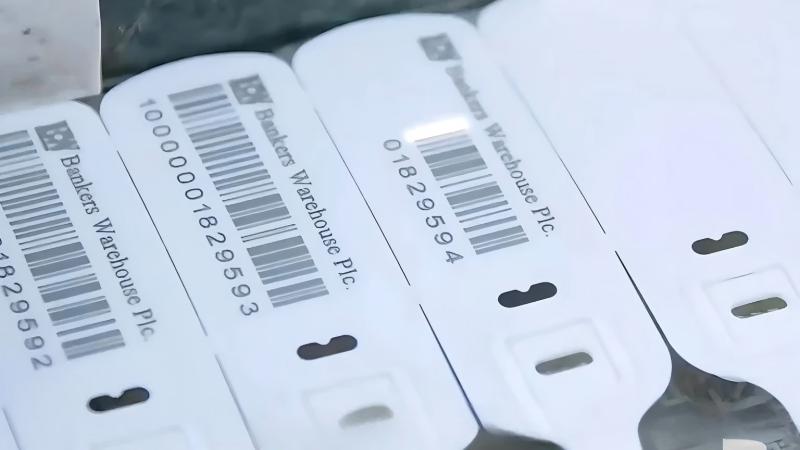
When selecting a seal specifically for transport duties, look for these 'road-worthy' characteristics:
- Laser Engraving: Printed numbers can be worn away by road grime, weather, and vibration. Laser engraving is permanent and remains legible under harsh conditions.
- Material Stability: Ensure plastic seals are made from high-quality polypropylene or nylon that resists becoming brittle in the cold or soft in the heat. For external seals, look for anodized aluminum or steel bodies that resist corrosion.
- Vibration-Resistant Lock: The seal's locking mechanism must be robust. A cheap internal clip can shatter from micro-vibrations, causing the seal to fail without any tampering. A metal locking jaw is superior.
- Clear Tamper Indication: The seal should not just break; it should show clear evidence of stress or stretching before it fails, helping to distinguish tampering from environmental failure.
The Pre-Dispatch Checklist: Finalizing Your Evidence Transport Seal Choice?
Are you ready to send your evidence on its journey? A final check ensures your seal choice is not just compliant, but strategically sound and legally defensible.
This pre-dispatch checklist forces the evidence technician to consciously consider the unique risks of transportation before the vehicle ever leaves the bay.
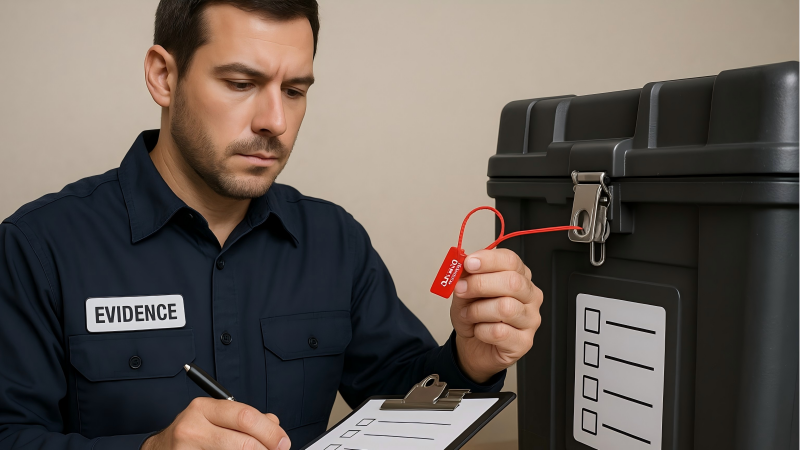
Before any evidence is dispatched, the sealing officer must be able to confirm the following:
- Is this seal rated for the environmental conditions of the journey? (Considers temperature, weather).
- Is its physical strength sufficient for an unattended vehicle/container? (Matches security to supervision level).
- Are its markings laser-engraved and durable enough to remain legible upon arrival? (Ensures verifiability).
- Is this seal's designated role (Internal vs. External) correct for this application? (Confirms proper layering).
- Has the unique serial number been logged with the transport manifest? (Links the physical seal to the procedural paperwork).
Conclusion
Choosing a security seal for evidence transportation is about securing the journey itself. By matching the seal to the specific risks of transit, you ensure the evidence arrives not just intact, but with its legal integrity unchallenged.
Secure Your Supply Chain with Security Seals from ProtegoSeal
At ProtegoSeal, we provide high-quality, tamper-evident security seals that deter theft, ensure compliance, and provide irrefutable evidence. Contact us today and let ProtegoSeal help secure your supply chain with reliable security seal solutions!

